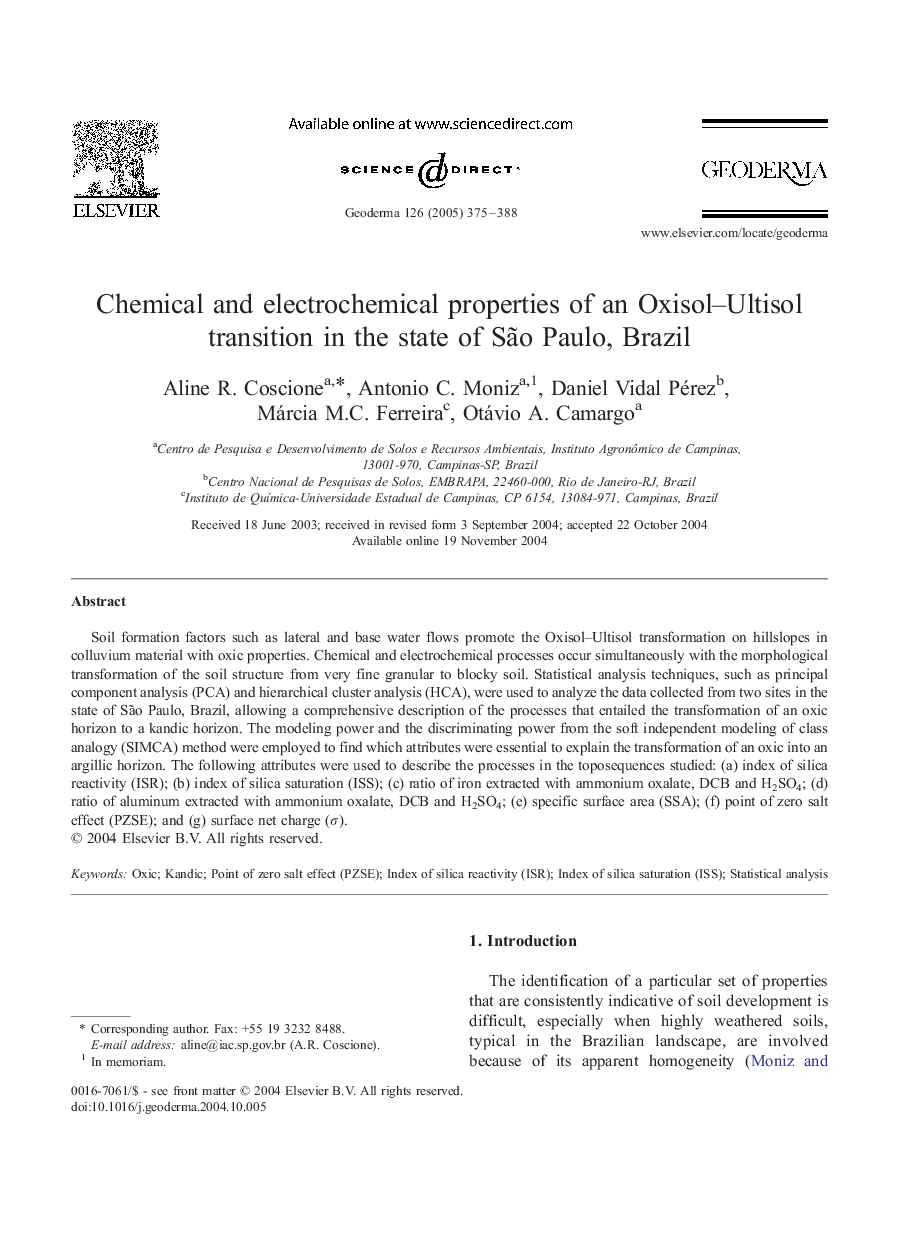| کد مقاله | کد نشریه | سال انتشار | مقاله انگلیسی | نسخه تمام متن |
|---|---|---|---|---|
| 9490597 | 1629579 | 2005 | 14 صفحه PDF | دانلود رایگان |
عنوان انگلیسی مقاله ISI
Chemical and electrochemical properties of an Oxisol-Ultisol transition in the state of São Paulo, Brazil
دانلود مقاله + سفارش ترجمه
دانلود مقاله ISI انگلیسی
رایگان برای ایرانیان
کلمات کلیدی
موضوعات مرتبط
مهندسی و علوم پایه
علوم زمین و سیارات
فرآیندهای سطح زمین
پیش نمایش صفحه اول مقاله

چکیده انگلیسی
Soil formation factors such as lateral and base water flows promote the Oxisol-Ultisol transformation on hillslopes in colluvium material with oxic properties. Chemical and electrochemical processes occur simultaneously with the morphological transformation of the soil structure from very fine granular to blocky soil. Statistical analysis techniques, such as principal component analysis (PCA) and hierarchical cluster analysis (HCA), were used to analyze the data collected from two sites in the state of São Paulo, Brazil, allowing a comprehensive description of the processes that entailed the transformation of an oxic horizon to a kandic horizon. The modeling power and the discriminating power from the soft independent modeling of class analogy (SIMCA) method were employed to find which attributes were essential to explain the transformation of an oxic into an argillic horizon. The following attributes were used to describe the processes in the toposequences studied: (a) index of silica reactivity (ISR); (b) index of silica saturation (ISS); (c) ratio of iron extracted with ammonium oxalate, DCB and H2SO4; (d) ratio of aluminum extracted with ammonium oxalate, DCB and H2SO4; (e) specific surface area (SSA); (f) point of zero salt effect (PZSE); and (g) surface net charge (Ï).
ناشر
Database: Elsevier - ScienceDirect (ساینس دایرکت)
Journal: Geoderma - Volume 126, Issues 3â4, June 2005, Pages 375-388
Journal: Geoderma - Volume 126, Issues 3â4, June 2005, Pages 375-388
نویسندگان
Aline R. Coscione, Antonio C. Moniz, Daniel Vidal Pérez, Márcia M.C. Ferreira, Otávio A. Camargo,